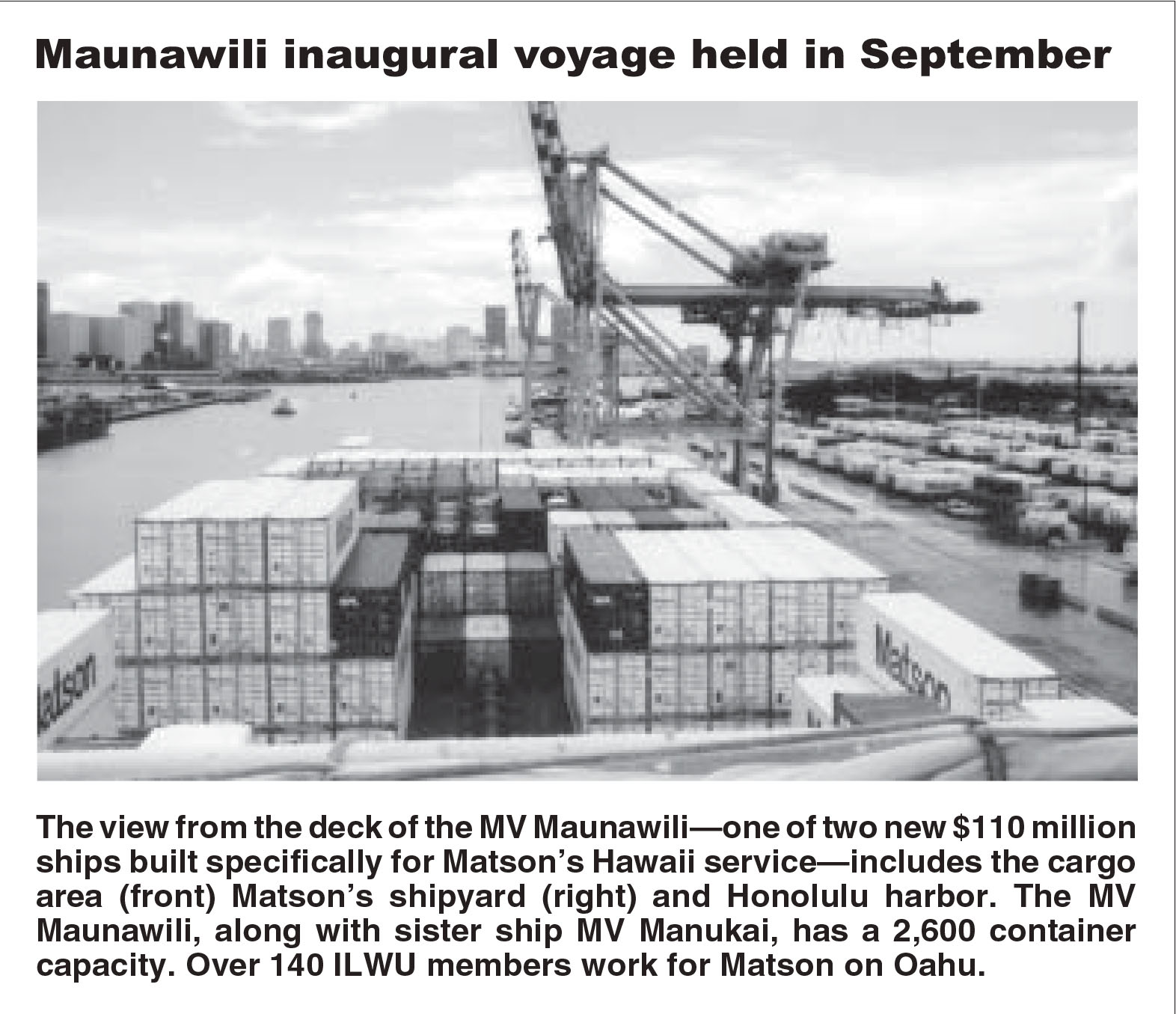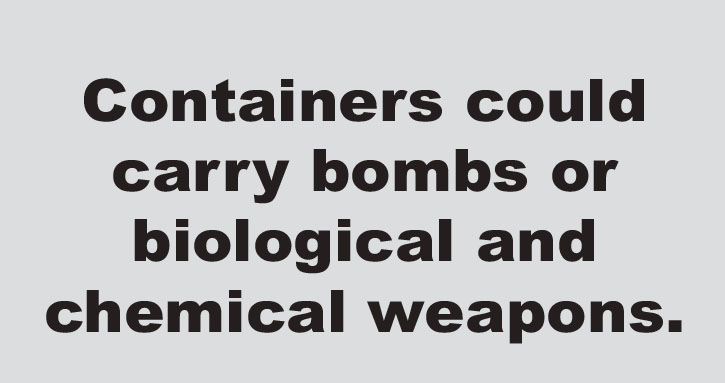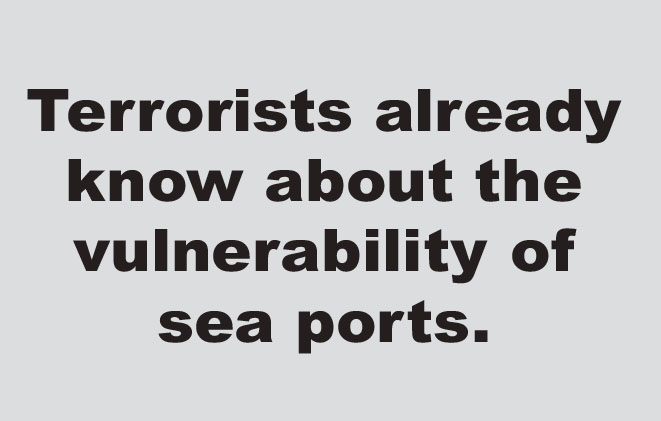LONG BEACH, Los Angeles—On April 28, 2004, a container exploded in the Port of Los Angeles just as it was being prepared to be loaded aboard a ship bound to Micronesia. It appears that vapor leaking from a propane or gas tank in the container exploded, blasting out its top, sides and back doors and scattering its contents across the terminal.
By sheer luck no one was injured or killed, but had the container been next to other cargo with hazardous materials or a “dirty” bomb planted by terrorists, there could have been extensive damage and many causalities.
The explosion was ruled an accident, but the incident reinforces the ILWU’s concerns about the inadequate inspection of containers, the disregard for the safety of the workers and community, and the lack of real security in the nation’s ports.
The container lacked a proper seal and manifest. There were no warning labels even though it contained six boxes of flammable liquids and gas. It was closed with only a padlock, a violation of terminal rules. The contents were described as FAK (freight of all kinds), a category no longer allowed to be imported under post-September 11 security regulations and previously required to be inspected if exported.
In the past this container would have been stopped at the gate and inspected by a longshore clerk, but to cut costs and increase production, terminal operators have been replacing gate clerks with remotely monitored video cameras and automated in-gate systems. With this system, the clerk can only watch the incoming container on a video screen and can not physically inspect the container.
No evacuation plan
The employer had no proper procedure nor evacuation plan had this been a real terrorist attack or had the explosion involved hazardous materials. The company continued to load a nearby ship, trucks were still coming in with loads, and supervisors were ordering people back to work. When the company refused to inspect the 31 remaining containers or close the gate until the area could be secured, the union pulled its members off the job for health and safety reasons. The employer accused the union of an illegal work stoppage, but the arbitrator ruled in favor of the union and
—continued on page 7

Containers remain weakest link in port security
Millions of containers come in and go out of our nation’s ports and only a tiny fraction, about 5 percent, are nspected. This lack of inspection poses a real threat to the health and safety of anyone working with or near
containers and people living and working in the areas around the ports. This lack of inspection makes containers the weakest link in port security and our nation’s security.

Containers could carry bombs or biological and chemical weapons. Improperly loaded and labeled containers also pose a danger to port workers and could disrupt vital shipping by damaging port facilities. This is the reason why the ILWU is demanding the physical inspection of container seals and empty containers.
Terrorists already know about the vulnerability of sea ports. On March 14, 2004, two suicide bombers infiltrated the highly secured Israeli Port of Ashdod 15 miles south of Tel Aviv and killed 11 port workers and wounded 18. The death toll could have been much higher if the bombers had targeted the fuel and chemical storage facilities at the
port.
The attack was the first of its kind directed at a port facility and took the Israelis by surprise. As Israeli Cabinet Minister Yosef Paritzky put it, the assailants “found a weak point and exploited it.” Ashdod has long been considered one of the most secure port facilities in the world, yet the attackers were able to gain access to the port. Some of the reports on the incident suggest that the attackers hid in a secret compartment behind a false wall in the rear of a 40-foot container.
Real threat
The potential threat of a terrorist attack using containers is so great that the US government designed a training exercise where a dirty, radioactive bomb explodes in a container in the Port of L.A. A press release from the US Joint Forces Command (USJFCOM) describes the exercise.

The Southern California portion of DP-04 involves a simulated massive explosion of a radiological dispersion device in the Port of Los Angeles, resulting in casualties and thousands of resident exposures to the unknown substance “cloud,” among several other events. State and federal partners, including the FBI, Transportation Security Administration, DoD, Department of Energy, the California National Guard Civil Support Teams, and the Federal Emergency Management Agency will participate in the fullscale exercise.
he full scale drill was run on August 5, 2004, with the Los Angeles and San Pedro fire and police departments
responding and coping with hundreds of people acting as dead and injured longshore workers and residents of the surrounding communities. The event was fictional, but the threat is real. ◆
